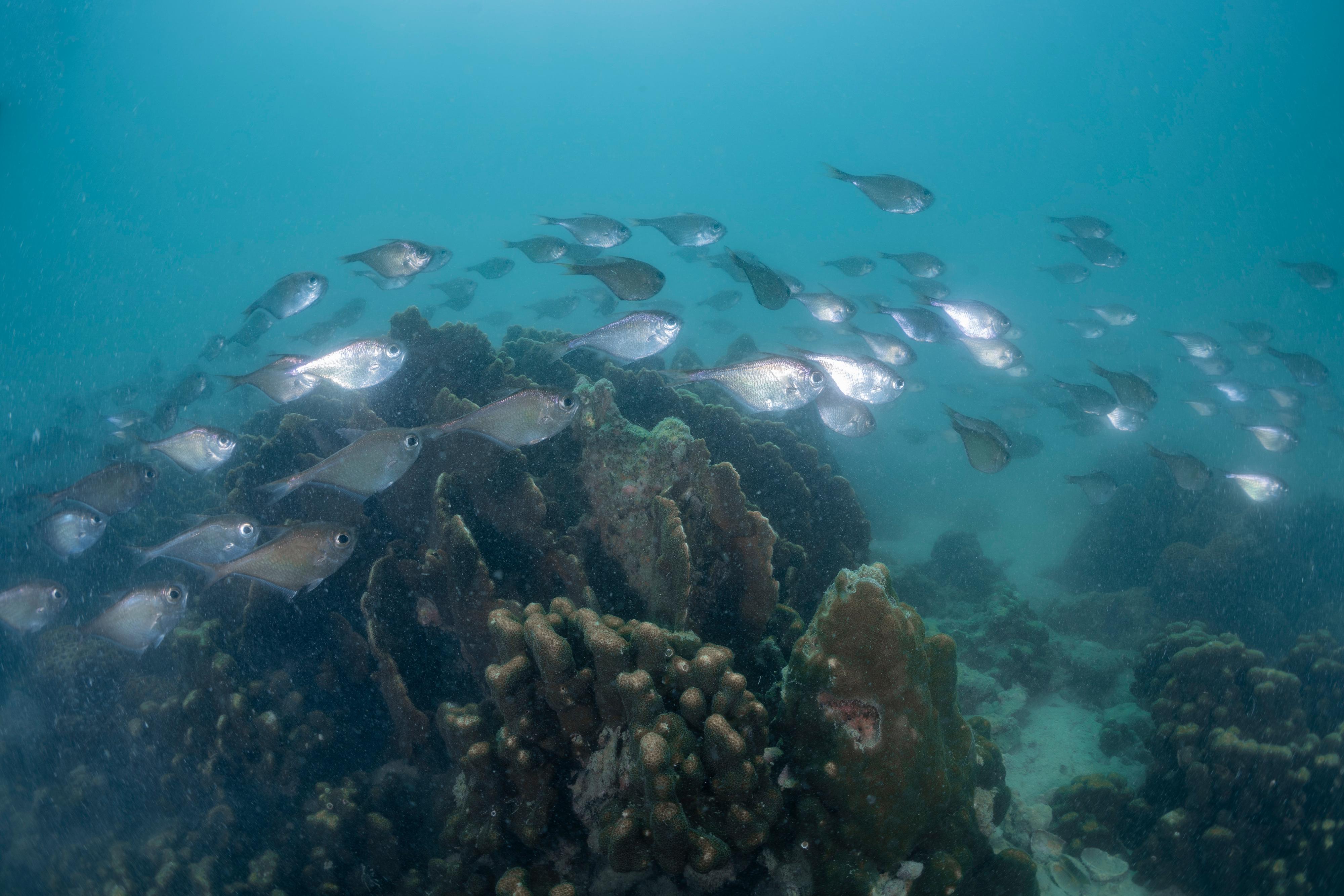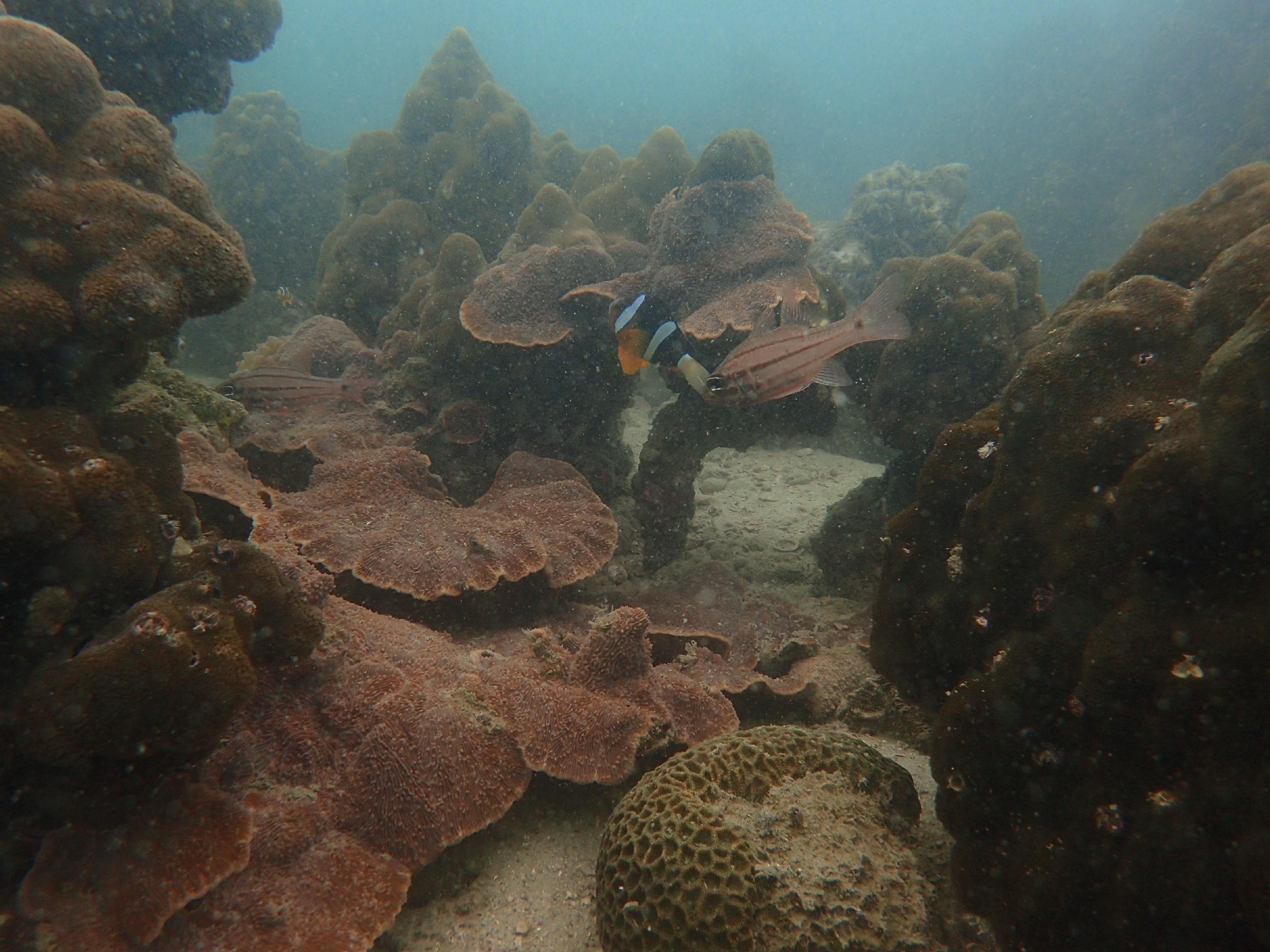The Agriculture, Fisheries and Conservation Department (AFCD) announced today (December 11) that the Reef Check this year showed that local corals are generally in a healthy and stable condition and that the species diversity remains on the high side.
Hong Kong Reef Check 2021, a five-month exercise that started this June, covered a wide range of areas including a number of sites of ecological importance as well as the best coral-growing sites known in the eastern part of Hong Kong waters extending from Tung Ping Chau in the north to the Ninepin Group in the south. Among the 33 survey sites, nine were within marine parks, including Hoi Ha Wan, Yan Chau Tong and Tung Ping Chau.
Varying levels of coral coverage, ranging from 10.4 per cent to 82.9 per cent, were recorded among the survey sites. Fifteen sites recorded coral coverage of over 50 per cent, including five sites within marine parks. Among all sites, Sharp Island North recorded the highest coral coverage, at 82.9 per cent.
Reef Check 2021 also assessed the condition of corals at 13 sites using the Coral Watch tool. By measuring the colour intensity of the corals using a specially designed Coral Health Monitoring Chart, the health condition of corals can be determined. The deeper the colour, the healthier the corals. The average health index of the sites was 4.15 (ranging from 3.25 to 4.73), which was similar to last year's figure (4.31). The average health index is well above the general average value (3), indicating that the corals are in a healthy and stable condition.
Hong Kong Reef Check's survey method and data collection follow international standards. Reef Check divers recorded coral coverage and health status as well as other indicator species (including 20 species of fish and invertebrates). Nineteen assigned indicator species were recorded in the survey sites, with wrasses, butterfly fish, groupers, sea urchins, sea cucumbers and cowries commonly found. The majority of the survey sites were found to have a high species diversity. Most of the groupers, wrasses, sweetlips and snappers were found in survey sites at Port Shelter in Sai Kung and north-eastern waters including Yan Chau Tong Marine Park.
Coral bleaching was observed at a few sites but the impact was minor and localised.
No signs of destructive fishing practices were observed at any sites. Abandoned nets were found at a few sites but their impacts were minor. The AFCD will arrange for a contractor to remove the nets.
Hong Kong Reef Check is part of a global programme to promote the sustainable management of coral reefs. Hong Kong Reef Check aims to raise public awareness of the ecological importance of corals and the need for coral conservation, and to provide updated information on local corals for conservation and management. The Hong Kong Reef Check Foundation held the first Reef Check in 1997. The AFCD has collaborated with the Foundation since 2000 in conducting the survey, which has drawn growing attention and support from the public. This year, 109 dive teams involving over 800 volunteer divers took part in the exercise, representing an approximately 20-fold increase from the level of participation in 1997. The AFCD awarded souvenirs and certificates to the Reef Check teams and participating scientists to recognise their contributions.
Coral reefs are highly productive systems that support a high diversity of marine life. For the sake of coral conservation in Hong Kong, the AFCD continues to put in place a series of measures and programmes. Key measures include designation of marine parks and marine reserves for conservation of the marine environment and protection of corals, organisation of a range of educational and publicity activities to enhance public understanding of the importance of protecting the marine environment and coral communities, a yearly Reef Check and studies to monitor the status of coral communities of Hong Kong and provide information for sound and adaptive management, installation of mooring and coral marker buoys to reduce coral damage caused by boating and recreational activities, and maintenance of a database to record the diversity and unique features of local corals.
Follow this news feed: East Asia










